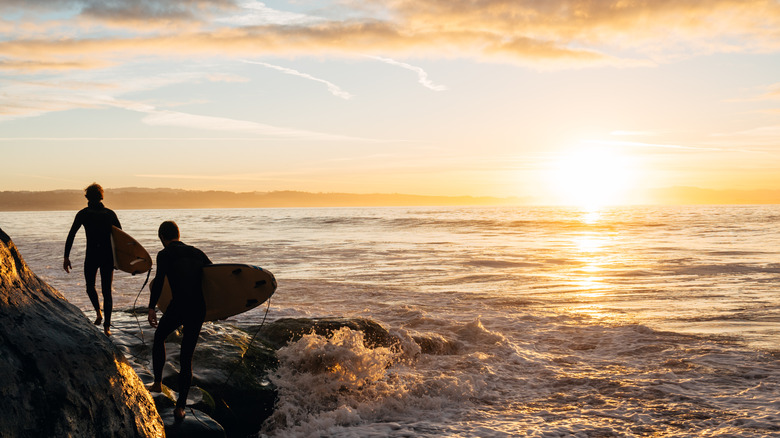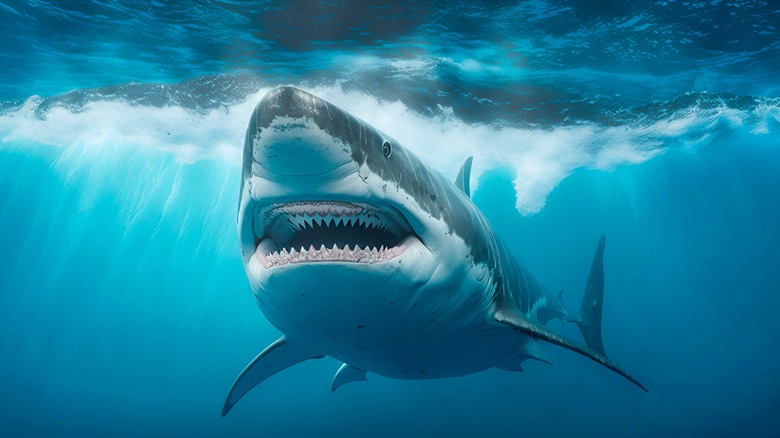Be Cautious When Swimming In This Section Of The California Coast
If any place in the United States of America is known for its beaches, it's California. The state's culture is very much tied to its shores. The coast is full of swimmers, surfers, kayakers, snorkelers, and scuba divers, and rightly so. That said, the Pacific Ocean isn't exactly a swimming pool here. There are waves, rocks, and lots of marine predators. If you spend time in the waters off the coast here, it's always a good idea to be cautious.
That is particularly true in the triangle-shaped region from Bodega Bay in Northern California, past San Francisco, down to Point Sur, south of Monterey Bay. The triangle then juts out into the ocean in the middle, past the Farallon Islands, about 30 miles offshore. This area of the California coast is known as the Red Triangle, and it's home to a shocking percentage of all the Great White Shark attacks in the country. Let's talk about the Red Triangle, why it exists, and common sense precautions and advice if you're going to spend time in the water there.
What's in the Red Triangle?
The Red Triangle has been home to 38% of all the recorded Great White Shark attacks in the U.S., with the greatest number between Marin County and Monterey County. Now, the likelihood of being attacked by a Great White in the state is 1 in 17 million (though for a diver, it's 1 in 136 million), which is very tiny. That said, the risk still exists, so it's important to be aware. These animals, an important part of the ecosystem, are a protected species and have suffered a great deal of bad press since the movie "Jaws." However, that doesn't mean the risk can be ignored.
The fall is the most likely time for shark attacks, but it can happen at any point during the year. Part of the reason for the relative frequency of the attacks is that this area has a high population of food sharks likes to eat, like sea lions, elephant seals, harbor seals, and sea otters. The Red Triangle's shark denizens can spend up to eight months in this zone for continuous sustenance. They've been protected here since 1994, and 1972's Marine Mammal Act also protected their food sources. So, what can you do to help keep yourself safer?
Safety tips for swimming in waters known for sharks
Attacks are unlikely, but it's important to keep your wits about you in the Red Triangle. Here are some safety tips to prevent an attack and what to do if you encounter a shark. Avoid areas where people are fishing because there are often more sharks around chum, blood, and fish guts. Makes sense. So does not entering the water when you see a high volume of seals, sea lions, or otters. Swimming in an area with a lifeguard is going to be safer, and avoiding swimming during dusk and dawn when sharks can't see you that well is a good idea.
Shiny bits on your bathing suit or jewelry that reflect light might mimic the flash of light on fish the sharks like to eat. Don't splash around in a panic if you see a shark because that's just what its prey would do. You should maintain eye contact if you can. If you do get close to one, punch it in the gills or eyes, not the nose, because that's very close to teeth, and hit it with whatever you have on you, like a surfboard or boogie board. Do not swim alone. Finally, if the worst happens, and you need to get away, go slowly, with your eyes focused on the shark's eyes. Fleeing like prey makes you look like one, and you definitely don't want to look like that.


